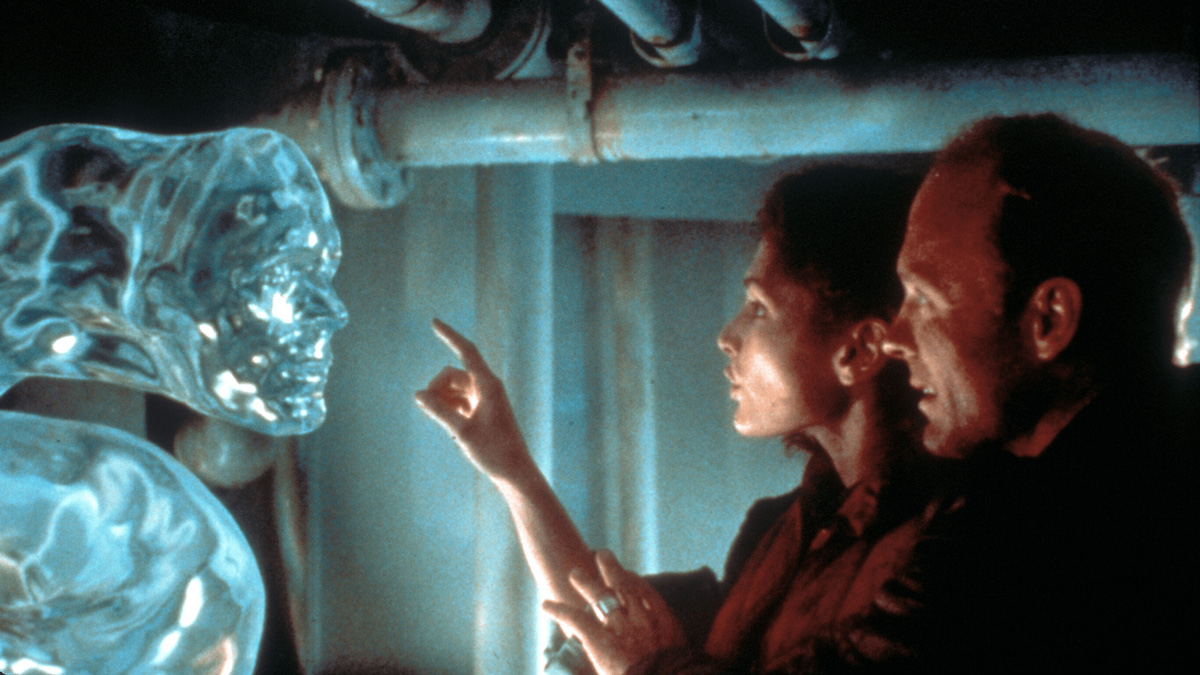
(c) Photofest / Getty Images
The historical significance of ``The Abyss.'' It is “an encounter between James Cameron and CG”
2019.04.22
"The Abyss" synopsis
An American nuclear-powered submarine goes missing near a deep-sea oil exploration base. The crew from the mining base and a team of naval divers head to the Abyss, The Abyss trench that rejects humans with its darkness, cold, and terrifying water pressure. What was waiting for them there was a life form different from humans that lived deep under the sea. .
In ``The Abyss'' (1989), the third feature film directed and written by James Cameron, a huge water tank was used as a nuclear reactor containment vessel in order to realize the first full-scale underwater shooting of a marine action movie. In the previous article , I introduced the many new developments that began with the construction of the 2000, including diving helmets and underwater photography equipment suitable for photography.
There are many challenges with this film, but the one I'd like to highlight is that Cameron used computer graphics for the first time in his filmography. In the late 1980s, the use of CG for visual effects in images had only recently begun, and its expressive power and value had not yet been established. Using CG for important scenes in The Abyss was a big gamble for Cameron at the time.
Index
- "False legs" conceived before writing the script
- ILM was at a turning point
- The gamble of depicting “life” with CG
- A pioneering work in the CG movement
"False legs" conceived before writing the script
Cameron writes an outline as a preliminary step to writing a screenplay, and then takes the step of finishing the screenplay after a while. In fact, writing this outline is the most creative part for him, as he envisions the characters, basic story development, human relationships, and even special effects. The outline for The Abyss included all the characters, a hurricane, the Explorer, a offshore base for oil extraction, and the non-terrestrial intelligence (NTI) Pseudopod.
Cameron envisioned NTI as an entity with the ability to freely manipulate water at the molecular level. In the middle of the story, in order to observe the inside of the underwater oil drilling base ``Deep Core,'' NTI stretches seawater into tentacles to create pseudopods that can open doors and imitate the faces of the humans they encounter. By the way, "pseudopod" is a biological term that refers to the "pseudopodia" used by protozoa such as amoebas for locomotion and absorption of nutrients (also called "pseudopodia").
The pseudopods made of seawater are transparent, shimmer, sparkle, reflect the surroundings, and even change their tips into the shape of a human face. Although the image was set in stone early on, Cameron wasn't sure how to express it. CG, an emerging technology that has already been used in several films such as `` Tron '' (1982), was also considered as a candidate, but there were concerns about the long production time and quality issues. So Cameron decided to send a letter to a number of visual effects companies detailing the footage he was looking for, and decided to look at the prototype footage (demonstration) before deciding who to entrust his work to.
“Tron” preview

